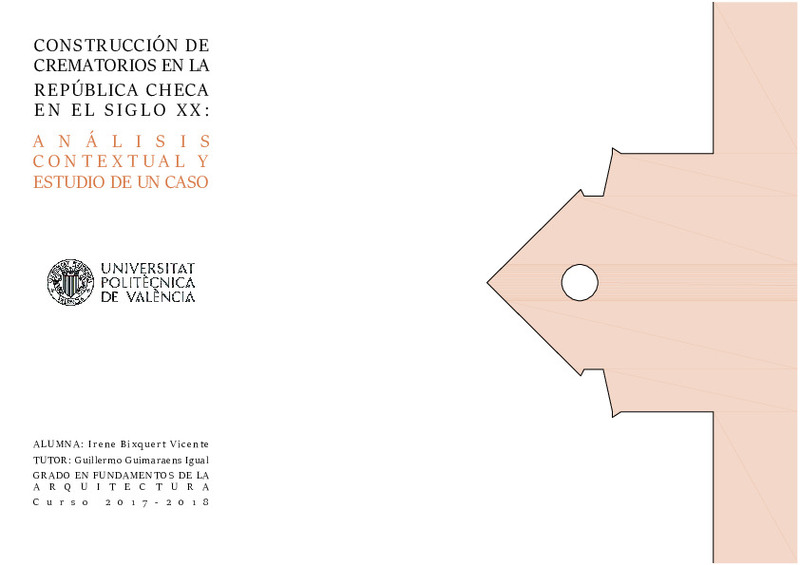JavaScript is disabled for your browser. Some features of this site may not work without it.
Buscar en RiuNet
Listar
Mi cuenta
Estadísticas
Ayuda RiuNet
Admin. UPV
Construcción de crematorios en la República Checa en el siglo XX: Análisis contextual y estudio de un caso
Mostrar el registro completo del ítem
Bixquert Vicente, I. (2018). Construcción de crematorios en la República Checa en el siglo XX: Análisis contextual y estudio de un caso. http://hdl.handle.net/10251/115987
Por favor, use este identificador para citar o enlazar este ítem: http://hdl.handle.net/10251/115987
Ficheros en el ítem
Metadatos del ítem
| Título: | Construcción de crematorios en la República Checa en el siglo XX: Análisis contextual y estudio de un caso | |||
| Autor: | Bixquert Vicente, Irene | |||
| Director(es): | ||||
| Fecha acto/lectura: |
|
|||
| Resumen: |
[ES] Tras la disolución del imperio Austrohúngaro en 1918 se dio un fenómeno muy particular en la nueva Checoslovaquia: la construcción de Crematorios.
Las antiguas leyes del Imperio Austrohúngaro no permitían este tipo ...[+]
[EN] After the dissolution of the Austro-Hungarian Empire in 1918, a very particular phenomenon occurred in the new Czechoslovakia: the construction of Crematoria.
The ancient laws of the Austro-Hungarian Empire did not ...[+]
[CA] Després de la separació de Txecoslovàquia el
1918 a la República Txeca es va donar un
fenomen molt particular: la construcció de
crematoris.
Les antigues lleis de l'Imperi Austrohúngar no
permetien aquest tipus ...[+]
|
|||
| Palabras clave: |
|
|||
| Derechos de uso: | Reconocimiento - No comercial - Sin obra derivada (by-nc-nd) | |||
| Editorial: |
|
|||
| Titulación: |
|
|||
| Tipo: |
|
Localización
recommendations
Este ítem aparece en la(s) siguiente(s) colección(ones)
-
ETSA - Trabajos académicos [4784]
Escuela Técnica Superior de Arquitectura







